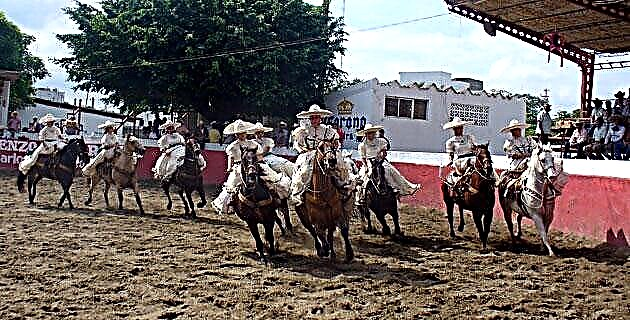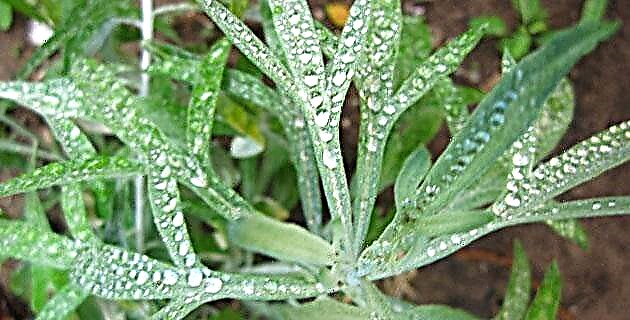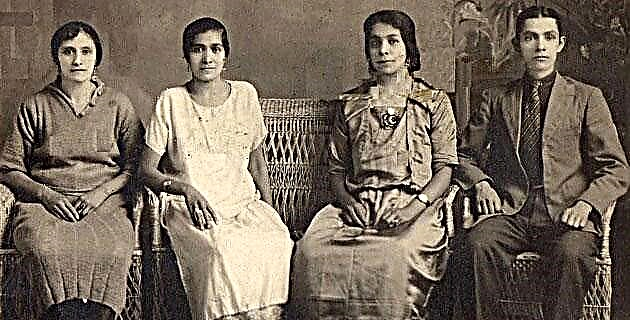
The photographic production of the 19th century has as a particular characteristic the great variety of processes used to capture and fix images: daguerreotypes, ambrotypes, tintypes, carbon prints and bichromated rubber are just some of them.
This wide range of processes can be divided into two groups: those that produced a single image -also called a camera image and that had their line of origin in daguerreotype- and those that allowed multiple reproduction -from a negative matrix obtained in the dark chamber-, whose origin is referred to the calotype.
Of the second group - those that made multiple reproduction possible - two printing techniques stand out: printing with salt or salted paper and albuminous paper. The creator of the first one was Henry Fox-Talbot, who obtained his photographs by means of a wax paper negative. Albumen printing, on the other hand, was a technique with which 85% of the images produced in the 19th century were made, which means that most of the photographic heritage of our country - corresponding to that century - is found in this process.
Albumen paper was one of the first materials used to print positives, and in 1839 Louis Blanquart-Evrard tried to make it by taking up the process of making glass negatives from Niépce de St. Victor, whose substrate was albumin sensitized with silver salts. . In this way, Louis carried out experiments with this type of colloid and applied it on sheets of paper, improving the result of Henry Fox Talbot's calotypes, to later make photographic prints and present his results to the French Academy of Sciences (May 27 of 1850). However, its use was decreasing due to the fact that professional photographers - the only ones who used it - obtained better results with emulsified papers for direct printing (collodion or gelatin).
One of the greatest difficulties in the manufacture of albumin paper was that when the paper was sensitized with silver nitrate, it sometimes came into contact with the paper through the albumin layer, and if the paper was not made of good quality, nitrate reacted chemically causing black dots or spots on the image surface. Another problematic factor was the degree of impurity of the paper and the sizing substances, since in the toning or toning of the images obtained on the albumen paper they could produce chromatic alterations. Thus, although the manufacture of albumen paper was apparently simple, it presented notable difficulties. However, there were manufacturers that sold good quality albumen paper, the most renowned factories being those in Germany -mainly those in Dresden-, in which millions of eggs were consumed annually for this industry.
The "recipe" for making paper, as well as its subsequent sensitization with silver salts, is described by Rodolfo Namias in 1898:
The eggs are cracked carefully and the albumin is separated from the yolk; the latter is sold to glove shops and pastry shops. The liquid albumin is then churned into flakes, either by hand or with special machines, and then left to rest: after a few hours it becomes liquid again, and the membranous particles separate well. The liquid albumin that is obtained should not be used immediately, but must be allowed to ferment a little, because this gives a much easier layer of the image […] it is commonly left [fermenting], as it is for eight or ten days , and in the cold season up to fifteen days; by the nauseating smell that it gives off, the moment when it reached its just limit can be calculated. The fermentation is then stopped with the addition of a small amount of acetic acid and filtered. Before using this albumin, a certain amount of alkali chloride must be added. The purpose of this chloride is to give rise, in the sensitization of the paper, to the formation of silver chloride together with the albumin layer, and this silver chloride constitutes precisely, together with silver albumin, the sensitive matter.
Today we know that albumin was placed in containers made of zinc plates, and in it the sheets of special paper of excellent quality and low weight that they wanted to prepare were floated. The sheet was immersed in this bath, holding it at two opposite angles and slowly lowered, avoiding as much as possible the formation of bubbles; after a minute or two it was removed and hung to dry. In general, the leaves were double proteinaceous so that they had the most shiny and homogeneous layer possible.
Once dry, the paper had to be satin to increase the gloss of the surface. If the process was carried out properly, an albuminous paper with a rather unpleasant smell would be obtained (the main characteristic of a well processed paper). The already proteinaceous paper was wrapped in packages that were kept in a dry place for later sensitization. This was carried out one or two days before its use, although in the mid-1850s (J.M. Reilly, 1960) it was possible to acquire it already sensitized and packaged in some commercial premises.
For sensitization, a 10% silver nitrate solution with distilled water was used; Subsequently, the mixture was poured into a porcelain bucket, and under the emission of a weak artificial light (gas or oil lamp, never incandescent), the albumen leaf was floated on the silver bath for two or three minutes; finally it was put to dry in the same way as when it was albumin, but now in complete darkness. Once dry, the paper was soaked in a 5% citric acid solution for one or two minutes and then drained and dried between filter paper. Once dry, the leaves were packed for later use, or they were rolled up, with the proteinaceous part facing out, in a cylindrical structure that was wrapped with paper. Likewise, the sensitized paper was stored in a dry place (M. Carey Lea, 1886).
To carry out photographic printing on this type of paper, the following steps were carried out:
a) The sensitized albumin paper was exposed to sunlight in contact with the negative, which could be glass with an albumin substrate, glass with collodion, or with gelatin.
b) The impression was rinsed under running water.
c) It was intoned, generally with a solution of gold chloride.
d) Fixed with sodium thiosulfate.
f) Finally, it was washed and placed on racks for drying.
The first albumen prints were matte in surface, and glossy surfaces made their appearance in the mid-1950s. With the introduction of stereoscopic photography and cartes de visite ("visiting cards"), albumen paper had its greatest boom (1850-1890).
For their commercialization, these images were mounted on rigid auxiliary supports, and adhered with starch, gelatin, gum arabic, dextrin or albumin (JM Reilly, op. Cit), both for technical and aesthetic reasons, since the type of paper used in the Photographic print, as already discussed, was very thin. The unmounted images were sometimes placed in albums, and other times, kept in packages or envelopes, in which they generally tended to roll up or wrinkle, which is the case with the material that is the object of this study.
These unmounted albumin prints were critically curled or wrinkled due to changes in humidity and temperature possibly occurring in the place where they were stored prior to their arrival at the INAH Photo Library, which also caused accelerated fading of some images .
In fact, the problems derived from the rolling of the albumen paper were reported in the first manuals for the elaboration of this type of photographic paper, and also its solution, which consisted in fixing the prints on secondary rigid cardboard supports, although this solution only worked if the curl was light (JM cit.).
The winding of the paper occurs due to variations in humidity in the environment, since its absorption is less in the albumin substrate than in the paper support, which causes swelling of the fibers of the support due to the difference in tensions.
The chemical and physical stability of this photographic process is very low, which makes the images produced with this technique very susceptible to deterioration, both due to environmental and intrinsic factors given by the characteristics of the albumin and photolytic silver of the image produced by direct printing.
Although there are studies on the factors that alter the life of this type of prints, which propose some methods to delay deterioration, there is no global vision of the problem that allows the photographic prints produced by the aforementioned processes to be conserved in an integral way.
The INAH Photo Library has a collection of approximately 10,000 pieces on albuminous paper, all of them of great value, mainly in terms of landscape and portraiture. Several photographs of this collection are in an advanced state of deterioration -despite the stable storage conditions-, for which a mechanical restoration work program was established that would allow the rescue of these pieces and their dissemination. In mechanical restoration, adapted techniques used in the restoration of documents are applied, which serve to recover the "integrity" and physical continuity of the support, although when it comes to intervening on the substrate or the image, serious problems are faced, since techniques and materials used are not in accordance with the basic rules of a restorative intervention. On the other hand, chemical methods are not applicable in this type of prints, since they modify the molecular structure of the image-forming silver (from photolytic silver to filamentary silver), altering the tone, a process that is irreversible.
This is how the following was done:
a) Photographic recording of the original rolled parts before treatment.
b) Physical and chemical analysis of the structure of the albumin prints.
c) Once the analysis of the pieces was carried out, they were subjected to a cold wetting method, which when increasing the percentage of water by weight in the structure of each piece would tend to unroll them.
d) We proceeded to dry and reestablish the original plane of the photographs by means of a paper press.
e) Finally, each one was mounted on a rigid neutral ph support, which helps to preserve its original structure, avoiding probable chemical reactions both on the primary support and on the image (fading, stains, etc.).
It should be noted that the rescue and conservation tasks of photographic image collections are essential to understand that photography is essentially the graphic memory of a society, a nation, and not just the result of a photochemical process or an encounter with thanatos.











